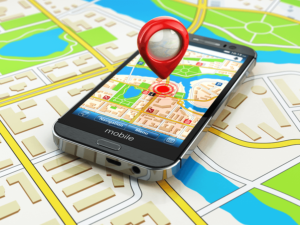How Do You Know Where You Are?
Can you imagine going on a trip without your mobile phone and Google’s Maps app? When you jump into your car, does it tell you how long it’s going to take to get to where you are going? Do you even still own any paper maps? Let’s face it – the world has changed and I think that we’d all agree for the better when it comes to how we navigate in our daily actives. However, how does this all work? How does your cell phone know where you are? How does it know how fast you are traveling? Are satellites involved?
These questions and more are going to be answered as a part of a presentation that is being put on by the Florida West Coast Section’s AESS chapter. This presentation will give an overview of the different types of Global Navigation Satellite Systems (GNSS). For those of you with long memories, this all started with the Long Range Navigation System (LORAN), which was not satellite based.
We’ll be addressing the development of the Global Positioning System (GPS) and methods of Geolocation and Geolocation accuracy. It turns out that just how accurate things are can be dialed up and dialed down.
Register online here: https://events.vtools.ieee.org/m/233123
Global Navigation Satellite System (GNSS) refers to a constellation of satellites providing signals from space that transmit positioning and timing data to GNSS receivers. The receivers then use this data to determine location. By definition, GNSS provides global coverage.
Examples of GNSS include Europe’s Galileo, the USA’s NAVSTAR Global Positioning System (GPS), Russia’s Global’naya Navigatsionnaya Sputnikovaya Sistema (GLONASS) and China’s BeiDou Navigation Satellite System. We’ll touch on all of them during this presentation.
Register online here: https://events.vtools.ieee.org/m/233123
Biography: Mr. Michael Mayor, MSE, PE, IEEE Senior Member and Vice Chair of the AESS/CS joint Chapter, is a Consulting Scientist providing Services in the areas of Secure Communications, Precision Geolocation, RF propagation and Digital Instrumentation for System Test and Evaluation.
Formerly, he was Vice President / Chief Scientist, Advanced Technology Research, in the Aerospace/Communications Division of ITT Defense Electronics. In this capacity, he conducted Research and Directed the development of a wide range of Mobile Secure Wireless Communications and Emitter Geolocation Systems and their components. These included: Radio Frequency Transceivers, Software Defined and Cognitive Radio Systems, Digital Receivers and Digital Signal Processing algorithms.
He authored six patents in Spread Spectrum Communications and Digital Instrumentation. He received the ITT Defense & Electronics Engineered for Life Award, for his technical contributions in Communications, Geolocation and Microelectronics areas. He is a Licensed Professional Engineer (State of Virginia) and holds a Master of Science in Engineering (MSE) in Systems Engineering (Communications and Signal Processing), from the School of Engineering and Applied Science, University of Pennsylvania.

